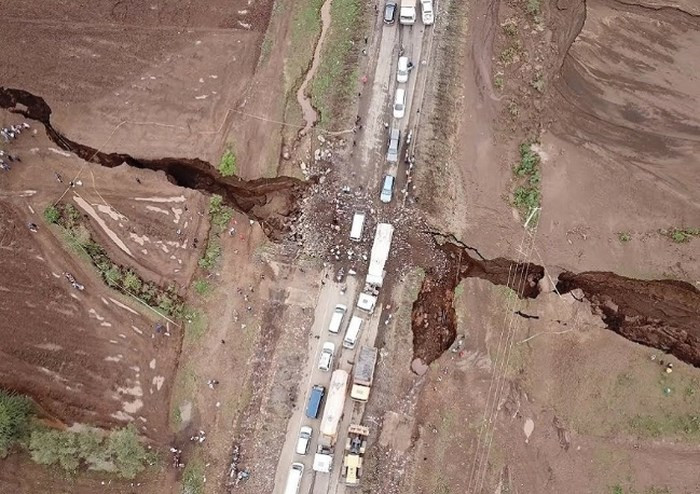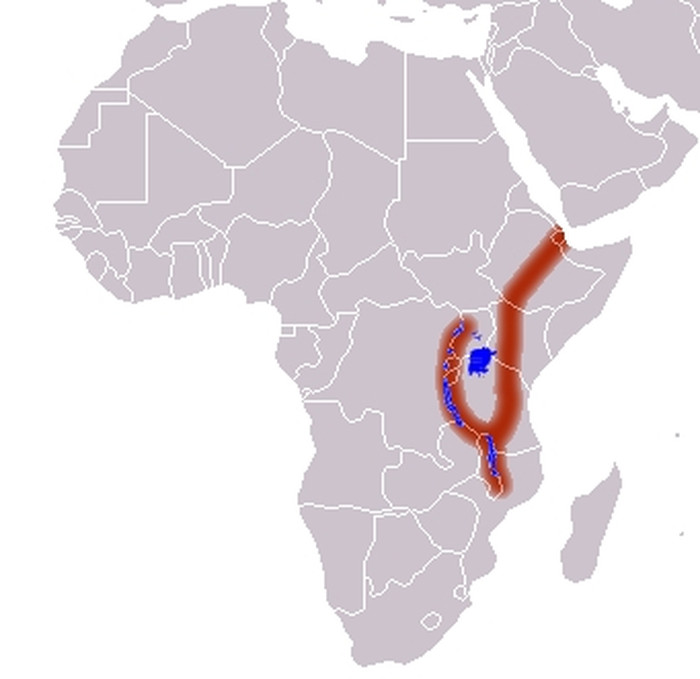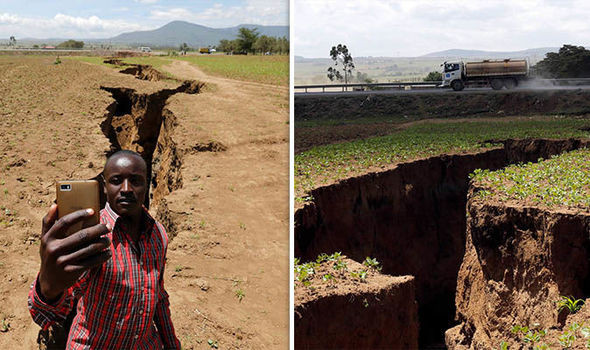The appearance of huge fissures, evidence of Africa began to split into two, forming a new continent
A giant crack stretching tens of kilometers and dozens of meters suddenly appeared recently in southwestern Kenya which is believed to be evidence that the African continent is beginning to split into two.
The above cracks are still growing, leaving a part of the Nairobi - Narok highway destroyed, accompanied by seismic activities in the area.

The giant cracked landscape cuts across the main highway in southwestern Kenya.
Earth is a planet that is constantly changing, despite many changes that we cannot see with the naked eye. The shift of geological plates is an example. However, the appearance of a giant crack in Kenya is a clear evidence of the tremendous movement of geological activity, raising questions about the continent of Africa beginning to split into two. Long-term forecasts of the scientific world.
In the history of formation for billions of years, Earth's bedrock has broken into a large number of tectonic plates. These plates do not stand still, but move relative to each other at different speeds, 'sliding' on the soft layer with a sticky mucus texture.
What exactly is the mechanism behind these movements is still controversial, but it is more likely to be related to convective currents in the soft layers and the forces arising from the contiguous zone between the tectonic plates.
These forces not only cause the displacement of tectonic plates, but also cause them to fracture, create fissures and can lead to the creation of new array boundaries.The East African Rift is an example of where this process is taking place.

Location of East Africa Rift on the continental map.
The stretch of East Africa stretching over 3,000km from the Gulf of Aden in the north to Zimbabwe in the south, splitting the current African tectonic plate into two unbalanced parts is the Somali and Nubian plates.
This is a stretch zone with abnormal activity and most of it is under the ocean. Geologists have long predicted, about 50 million years from now, Africa will be divided into two by the East African Rift.
Geological activity along the eastern branch of the valley cracked, along Ethiopia, Kenya and Tanzania, became clearer when a large crack suddenly appeared in southwestern Kenya.

Illustration of seismic activity causing fractures in Earth's crust.
"The Great Rift Valley will split Africa into two. With what is happening, we have calculated that the African continent is separating in the Somali region at a rate of 2.5cm." In the near future this will continue to happen, we will have a separate sea between Somalia and the rest of Africa , " Kenyan geologist David Ahede told local newspaper Daily Nation.
Mr. Ahede said the acceleration of the tectonic movement of Earth's plates was mainly stimulated by volcanic activity near the tectonic plate. Geologists believe that Africa's speed of separation is quick because of the activity of a volcano called Suswa located on the Great Rift Valley.

Imagine the African continent after splitting into two.
In the history of the Earth there has also been an example of where the splitting of tectonic plates occurred in the South Atlantic Ocean, which was formed from a break between South America and Africa around 138. Millions of years ago - later discovered by the scientists when they found that the coastlines of the two continents fit together like on a jigsaw puzzle.

In the meantime, many locals do not miss the opportunity to take pictures with huge cracks to show off on social networks.
- 8 maps blow your thoughts about the black continent
- Europe will sink under Africa
- The soil cracked an unprecedented giant split the African continent
- Discovering traces of the ancient Antarctic continent
- East Africa: The desert is at risk of turning into a sea
- Africa lies on a huge underground water tank
- The Australian continent tilts, moving in seasons
- Find the world's oldest arrow in South Africa
- Zebras record the longest migration on the continent
- Find the 'lost' ancient continent ... located below Europe
- Detecting traces of 'legendary continent'
- Pull the ice from the North Pole to Africa
 'Fine laughs' - Scary and painful torture in ancient times
'Fine laughs' - Scary and painful torture in ancient times The sequence of numbers 142857 of the Egyptian pyramids is known as the strangest number in the world - Why?
The sequence of numbers 142857 of the Egyptian pyramids is known as the strangest number in the world - Why? History of the iron
History of the iron What is alum?
What is alum?